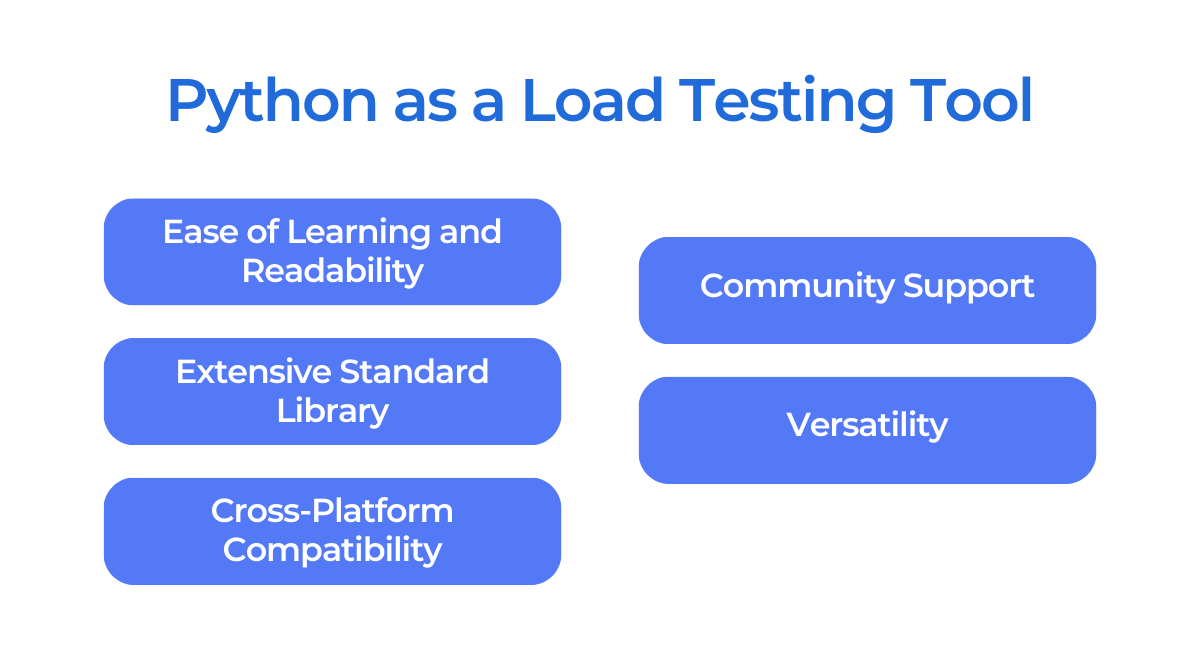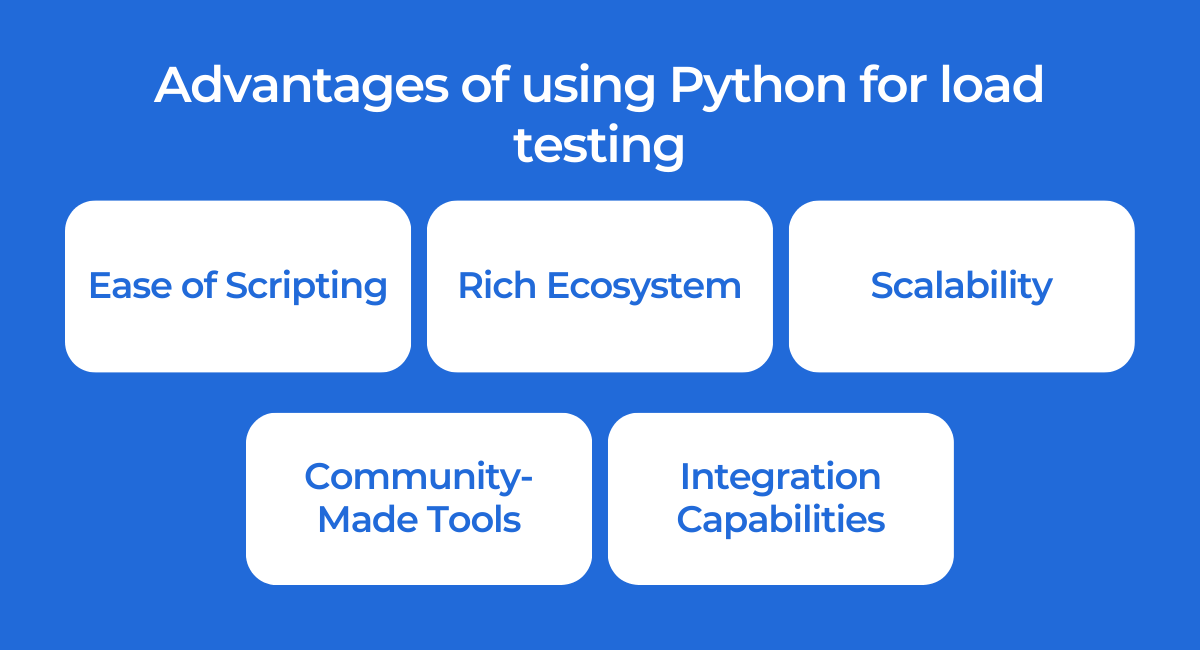Load testing is a crucial phase in the software development life cycle that involves evaluating a system's performance under anticipated load conditions. The primary goal is to determine how well the software can handle a specific amount of concurrent users, transactions, or data volume.
By simulating realistic usage scenarios, load testing helps identify potential bottlenecks, performance issues, and scalability concerns within a system. Read this Load Testing guide to get more insights
Importance of Load Testing

Load testing is essential for several reasons:
- Performance Validation: It ensures that the software performs efficiently and meets performance requirements under expected loads.
- Scalability Assessment: Load testing helps assess the system's ability to scale by determining how it performs as the user or data load increases.
- Identifying Bottlenecks: It helps identify performance bottlenecks and areas of weakness in the application or infrastructure.
- Reliability and Stability: Load testing ensures that the software is reliable and stable under different levels of stress, preventing crashes or unexpected behaviour in production environments.
- User Experience: It directly impacts user experience by ensuring that response times remain within acceptable limits even during peak usage.
Understanding Load Testing
Load testing is a type of performance testing that assesses how a system behaves under specific conditions by simulating realistic user activity. The primary purpose of load testing is to measure the system's response time, throughput, and resource utilization under varying levels of load.
This process helps identify performance bottlenecks, potential issues, and the system's ability to handle a specified number of concurrent users or transactions. Load testing is crucial for ensuring that a software application performs optimally and meets user expectations, especially during peak usage periods.
- Load Testing: Load testing involves applying a normal load to a system to evaluate its performance metrics. This load is typically based on the anticipated usage patterns of the application. To ensure that the system can handle the expected amount of traffic, transactions, or data volume without degrading performance.
- Stress Testing: Stress testing involves subjecting a system to extreme conditions, such as high traffic, data volume, or concurrent users, to assess its breaking point or failure behaviour. To identify the system's limits and potential points of failure and to understand how it behaves under stress conditions.
- Performance Testing: Performance testing is a broader category that includes load testing and stress testing. It focuses on evaluating various performance aspects, such as response times, throughput, and resource usage, to ensure the system meets specified performance criteria. To validate that the system performs efficiently, reliably, and consistently under different scenarios.
Benefits of incorporating load testing in the development process

- Early Issue Identification: Load testing allows the early identification of performance issues and bottlenecks in the development lifecycle, reducing the likelihood of encountering problems in production.
- Optimization and Scalability: By analyzing performance metrics under different loads, developers can optimize code, infrastructure, and configurations to enhance scalability and ensure the system can handle growth.
- Enhanced User Experience: Load testing ensures that the application maintains acceptable response times and reliability, leading to an improved user experience and satisfaction.
- Cost Savings: Identifying and resolving performance issues early in the development process can save significant costs associated with post-production bug fixes and system downtime.
- Confidence in Deployment: Load testing provides confidence in deploying the software to production environments, knowing that it can handle the expected load and deliver a reliable performance.
- Compliance with Service Level Agreements (SLAs): Load testing helps organizations meet SLAs by ensuring that the application meets specified performance criteria and provides a consistent user experience.
Python as a Load Testing Tool

Incorporating load testing into the development process is essential for delivering high-quality software that meets performance expectations and user demands. Python is a high-level, general-purpose programming language known for its simplicity, readability, and versatility. It has gained immense popularity in the software industry for a variety of reasons:
- Ease of Learning and Readability: Python's syntax is clear and readable, making it easy for developers to learn and write code quickly. This characteristic promotes collaboration and maintainability.
- Extensive Standard Library: Python comes with a vast standard library that includes modules and packages for a wide range of tasks, facilitating development and reducing the need for external dependencies.
- Community Support: Python has a large and active community of developers. This community contributes to an extensive ecosystem of libraries, frameworks, and tools that enhance the language's capabilities.
- Cross-Platform Compatibility: Python is platform-independent, meaning that Python code can run on various operating systems without modification. This feature simplifies the development and deployment process.
- Versatility: Python is used in various domains, including web development, data science, artificial intelligence, automation, and software testing, making it a versatile language that suits different needs.
Advantages of using Python for load testing

- Ease of Scripting: Python's syntax is straightforward, making it easy to write and understand scripts for load testing. This simplicity accelerates the scripting process, allowing testers to focus on test scenarios rather than dealing with complex code.
- Rich Ecosystem: Python has a vast ecosystem of libraries and frameworks that can be leveraged for load testing. Libraries like Requests, urllib, and frameworks like Locust provide tools for making HTTP requests, handling responses, and simulating user behaviour.
- Community-Made Tools: The Python community has developed several load-testing tools and frameworks that are widely used. Notable examples include Locust, PyTest, and Gatling-Python, which simplify the process of creating and running load tests.
- Integration Capabilities: Python seamlessly integrates with other tools and technologies, allowing load testing scripts to be easily integrated into continuous integration (CI) pipelines or combined with other testing tools.
- Scalability: Python's multiprocessing and threading capabilities enable the scaling of load tests across multiple processes or threads, allowing testers to simulate a more significant number of virtual users and achieve more realistic load scenarios.
Comparison with other load testing tools
While Python is a powerful language for load testing, it's essential to consider other specialized load testing tools in the market. Here's a brief comparison:
JMeter (Java):
Advantages: GUI-based tool, extensive community support, broad protocol support, suitable for complex scenarios.
Disadvantages: Heavier resource usage and steeper learning curve for complex scenarios.
Locust (Python):
Advantages: Lightweight, easy-to-write code, scalable, suitable for distributed testing, real-time reporting.
Disadvantages: Limited protocol support compared to some other tools.
Gatling (Scala):
Advantages: High performance, supports the Gatling DSL for expressive scenarios, suitable for both simple and complex testing.
Disadvantages: Learning curve for the Gatling DSL, limited community compared to some other tools.
The choice between Python and other tools depends on factors such as the testing requirements, the skill set of the team, and the specific features offered by each tool. Python's strength lies in its simplicity, versatility, and ability to integrate seamlessly into various testing scenarios.
Best Practices for Python Load Testing
Writing efficient and scalable load test scripts
Use Asynchronous Programming:
Advantage: Asynchronous programming, supported by libraries like "asyncio" in Python, allows for efficient handling of concurrent operations, making it beneficial for scalable load testing.
Optimize Code for Performance:
Advantage: Write efficient code to reduce resource usage and improve the execution speed of load tests.
Distribute Load Across Multiple Workers:
Advantage: Distributing load across multiple workers allows for a more realistic simulation of concurrent users and enhances the scalability of load tests.
Incorporating realistic scenarios and data
Use Realistic Test Data:
Advantage: Incorporate real-world data to make load tests more representative of actual usage patterns and scenarios.
Diversify User Scenarios:
Advantage: Create a variety of user scenarios to simulate different user behaviours and paths through the application.
Parameterize Dynamic Data:
Advantage: Parameterize dynamic data, such as user credentials, to create more diverse test scenarios and avoid using the exact data for every virtual user.
Monitoring and analyzing performance metrics
Use Logging and Reporting:
Advantage: Implement logging and reporting mechanisms to capture detailed information about test execution, response times, and potential issues.
Leverage Load Testing Tool Metrics:
Advantage: Load testing tools like Locust provide built-in metrics for response times, request rates, and other performance indicators. Leverage these metrics for analysis.
Use External Monitoring Tools:
Advantage: Employ external monitoring tools to gather additional insights into the system's performance, such as server resource usage, database queries, and network metrics.
By following these best practices, load-testing scripts written in Python can be more efficient, scalable, and capable of providing valuable insights into the performance of software applications under different conditions. Additionally, incorporating realistic scenarios and data, along with effective monitoring and analysis, ensures that load tests are representative and yield actionable results.
You may also be interested in Automated Testing Solutions: Reduce Backlogs Efficiently.
Book a Demo and experience ContextQA testing tool in action with a complimentary, no-obligation session tailored to your business needs.
We make it easy to get started with the ContextQA tool: Start Free Trial.
